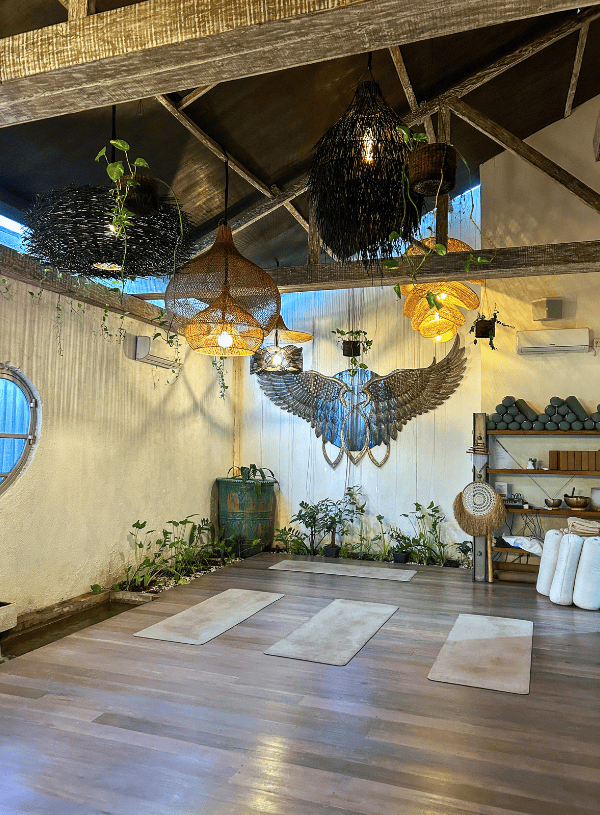Temples to Visit in Ubud: 10 Must-See Spiritual Sites & Water Temples in Bali
Last Updated on August 26, 2025
After living here for some months, I like to think of Ubud as an open-air temple. Here, spiritual sites are everywhere, surrounded by shops, family homes, and the everyday life of both locals and travelers.
At almost every street and corner, you’ll find beautiful candi bentar gates with intricate details, and the tiered meru shrines that are so typical of Balinese temple architecture.
Many times, I wished I could enter temples that were unfortunately closed to visitors and used only for prayer. In those cases, the only option was to observe quietly through the small gates at the entrance.
Still, many of the best temples in Ubud and its surroundings are open to visitors, and for me, they are one of the true highlights of this magical town. In this post, I’ll share 10 must-see temples to visit in Ubud—some right in the center, others just a short scooter ride away.
This article may contain affiliate links. This means that if you purchase through one of the links, I may be paid a small commission at no extra cost to you. Thank you for supporting the blog and allowing me to keep sharing meaningful travel experiences with you.
Don’t have time now?📌 Save it for later!

Things To Know Before Visiting Temples in Bali
1. Temple Dress Code
Visiting temples in Ubud—and in Bali in general—comes with a specific dress code. Most of the time, a sarong and sash (a narrow piece of cloth tied around the waist before entering a temple) are included in the ticket price. Both are mandatory if you want to enter.
Contrary to what you might think, covering your shoulders is not required to enter a Hindu Balinese temple. What matters is dressing modestly. Personally, I always carry a sarong with me when I plan to visit temples, just in case I need an extra layer to cover up.
2. Entrance Fees
Most temples in and around Ubud require an entrance fee, which usually ranges from around IDR 20K for smaller temples to about IDR 150K for larger ones like Besakih.
Entrance fees must be paid in cash—no exceptions—so it’s a good idea to check the costs in advance and make sure you have enough with you.
A sarong and sash are always included in the ticket price, so don’t fall for the typical “You need to buy a sarong!” scam you’ll often find outside the temples.
3. Best Time To Visit Temples
My favorite time to visit temples is early in the morning, often right after they open—usually around 7 or 8 am. Nothing compares to the morning atmosphere: the quiet echoing through the altars, the soft light, and only the sounds of nature all around.
That said, many temples aren’t on the usual tourist routes, so you can still find peace and silence later in the day as well.
For each temple I describe in this post, I’ll also suggest the best time to visit.
4. Respectful Behavior
Temples are deeply significant religious sites for the local community, so it’s important to behave appropriately. First of all, dress modestly—even in the heat—and keep your sarong and sash on at all times.
Avoid entering areas that are closed to the public or where ceremonies may be taking place, and never step on gates or platforms marked as off-limits. If you see locals praying or performing rituals, do not take photos without first asking for their consent.
Balinese people are incredibly kind and will likely never correct you, even if you’re doing something inappropriate. But that doesn’t make it respectful—so it’s up to us as visitors to honor their space and traditions.
4 Temples to Visit in Ubud
These temples are all located in Ubud city center, making them simple to explore during your stay.
1. Saraswati Temple
The Saraswati Temple, also known as the Ubud Water Palace, is located in the very heart of Ubud, right on Jalan Raya, the town’s main road. It is dedicated to Goddess Saraswati, the Hindu deity of literature, learning, and art. The temple was commissioned by the Prince of Ubud and completed in 1952.
Today, visitors can only explore the garden, as the inner sanctum remains open exclusively for local ceremonies and prayer. Still, I believe the garden is one of the most beautiful and picturesque in Ubud.
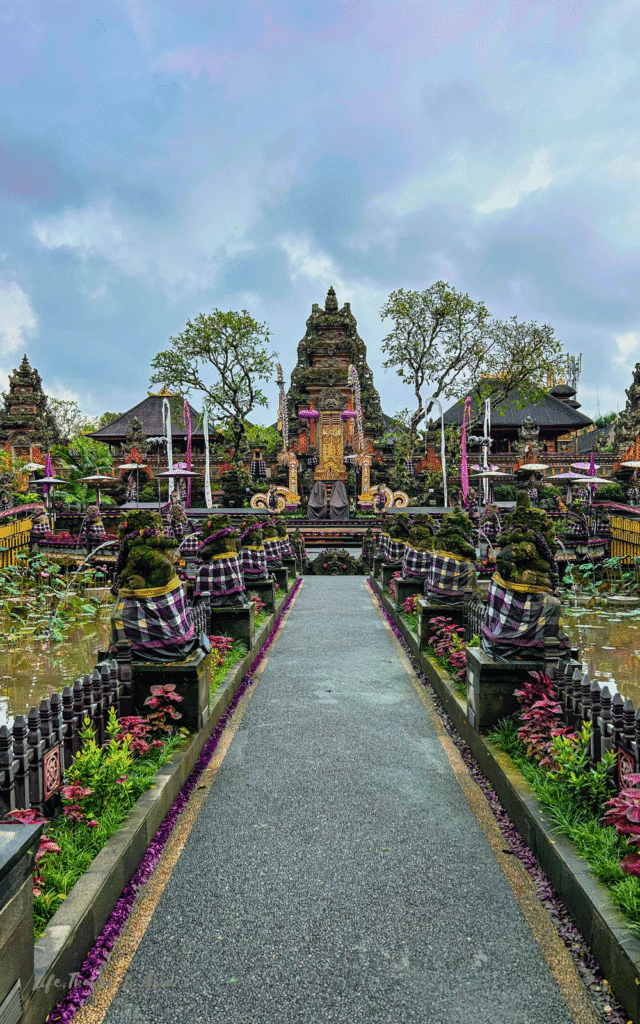
Of course, the traditional red sandstone gates provide the classic backdrop of Balinese architecture. But what makes this site truly special is the lotus pond, crossed by a stone bridge and lined with statues of Hindu mythological creatures that double as fountains.
Though small, the garden is wonderfully maintained, with every detail carefully cared for: blooming lotus flowers, frangipani trees, colorful Balinese decorations, and sarongs draped around each statue.
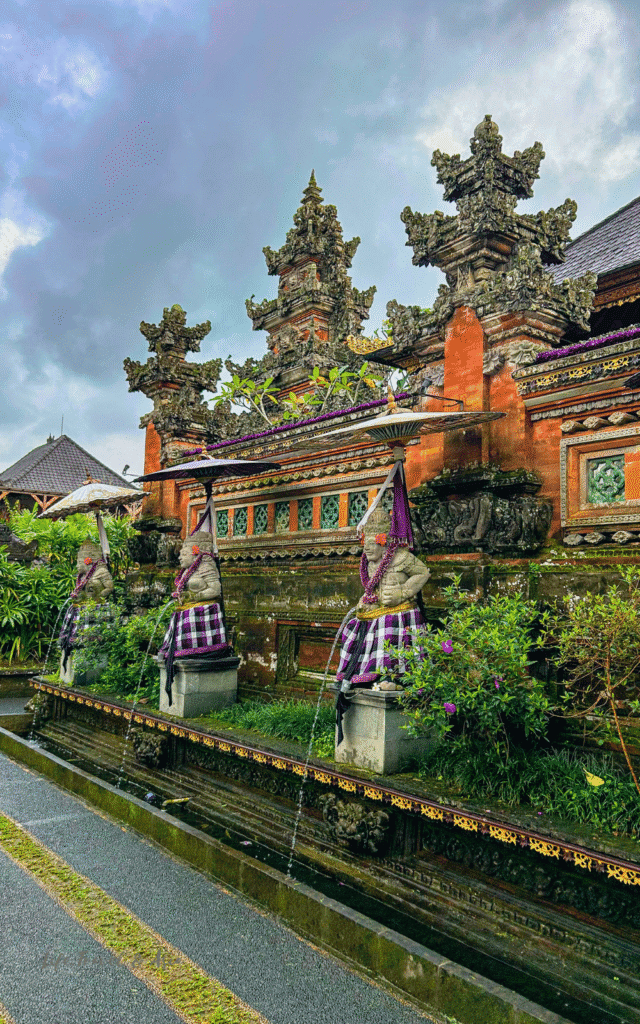
The entrance fee is IDR 60K and includes a Sarong and vest to wear to get in. Since the garden is relatively small, I recommend visiting right at opening time (8 am). This way, you can enjoy the peaceful atmosphere and take photos without the crowds. By around 10 am, it tends to get busy as it’s right in the center of Ubud.
2. Puri Saren Agung
Puri Saren Agung, also known as the Ubud Royal Palace, was once the official residence of Ubud’s royal family. Today, much of the site remains private, but visitors can access two inner courtyards that showcase some of the finest examples of Balinese architecture.
The garden is beautifully maintained, with intricate red sandstone gates, statues, golden pavilions, and vibrant flowers.
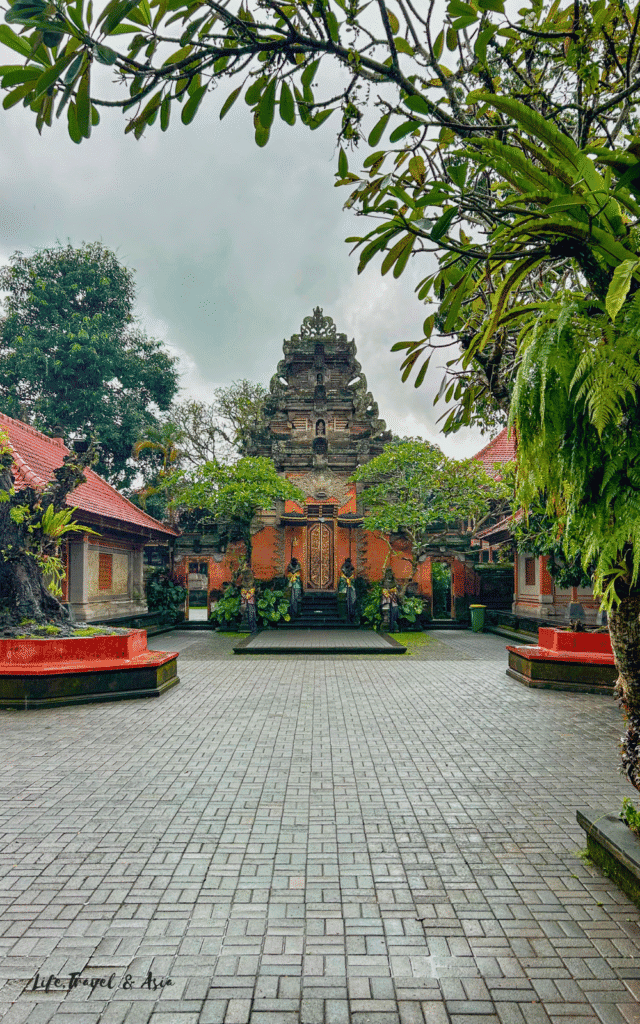

The palace is small, and it won’t take long to explore—20 minutes is usually enough. What struck me most was how quiet it felt inside. The constant traffic noise outside seemed to disappear completely, as if an invisible barrier separated the palace from the busy street.
The best time to visit is right at opening, around 7:45–8:00 am, before the tour groups begin arriving around nine.
3. Pura Dalem Ubud
Pura Dalem is probably my favorite temple in Ubud that’s actually open to visitors. I must have walked past its impressive staircase and towering stone gate dozens of times before finally stepping inside. And yet, each time I stopped to wonder what lay beyond that almost intimidating entrance.
The temple is dedicated to Rangda, the demon queen, and you’ll find statues of demons scattered throughout the complex.
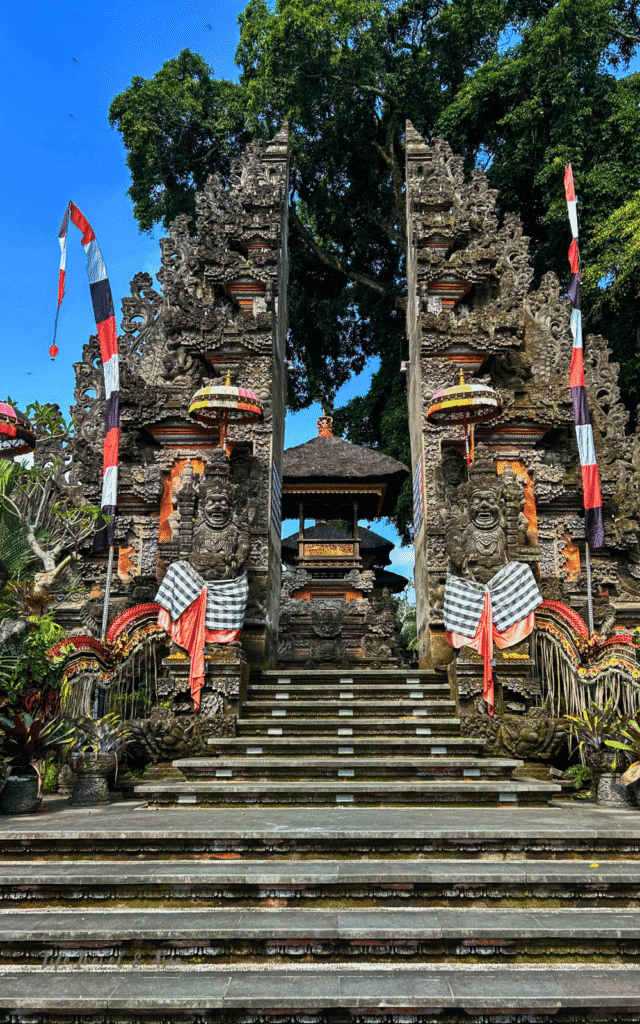
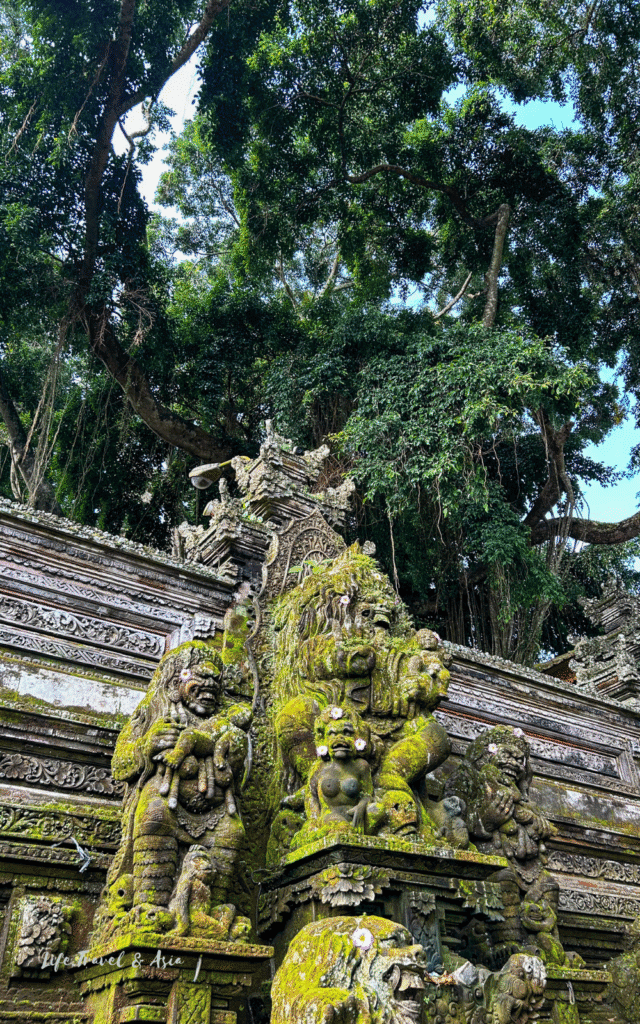
Climbing the stairs toward the gate felt like entering a truly sacred space, surrounded by a powerful energy. The atmosphere is made even more special by the tall trees that embrace the temple entirely, creating a natural, protective boundary.
Inside, it is incredibly calm and quiet—the perfect place to sit, observe, and take it all in. One of the best things about Pura Dalem is that, for some reason, it’s not included in most temple tours, which means you can visit peacefully at almost any time of day.

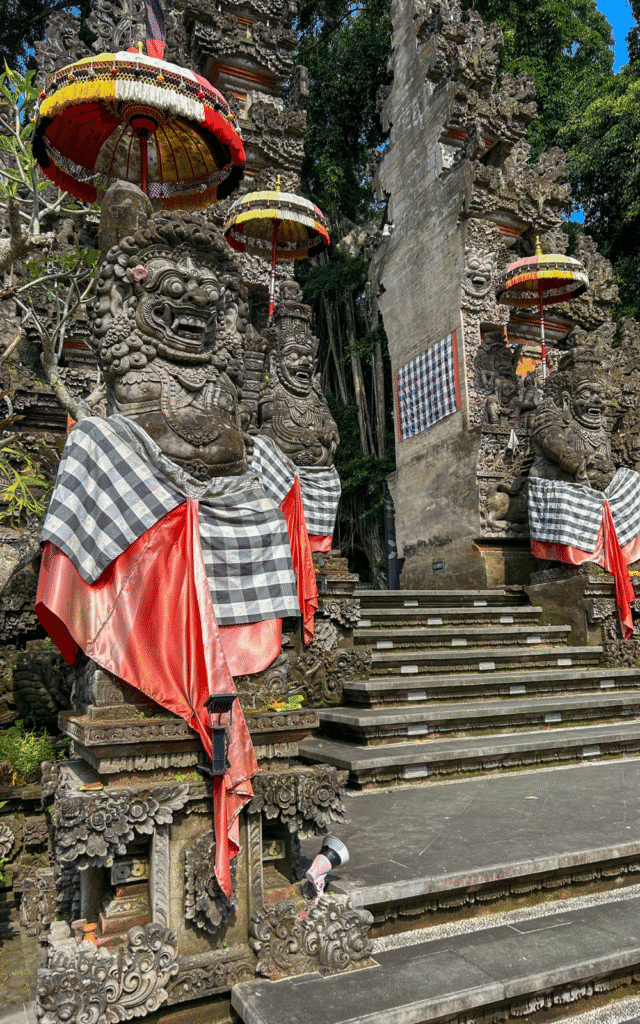
The temple isn’t always open, which makes it a little tricky to visit. It actually took me two months before I managed to match my free time with its opening hours.
When it does open, it’s usually from 10 am until around 5 pm, as the grounds then prepare for the traditional Balinese dance performance that takes place at 7 pm.
4. Pura Gunung Lebah
Pura Gunung Lebah is actually my favorite temple in Ubud—though sadly, it isn’t open to visitors.
I’ve included it in this list because legend says it was one of the very first temples built in the area, founded by a Javanese priest. Drawn by the spiritual energy of Campuhan Hill, where two rivers meet, he chose this spot to establish the temple.
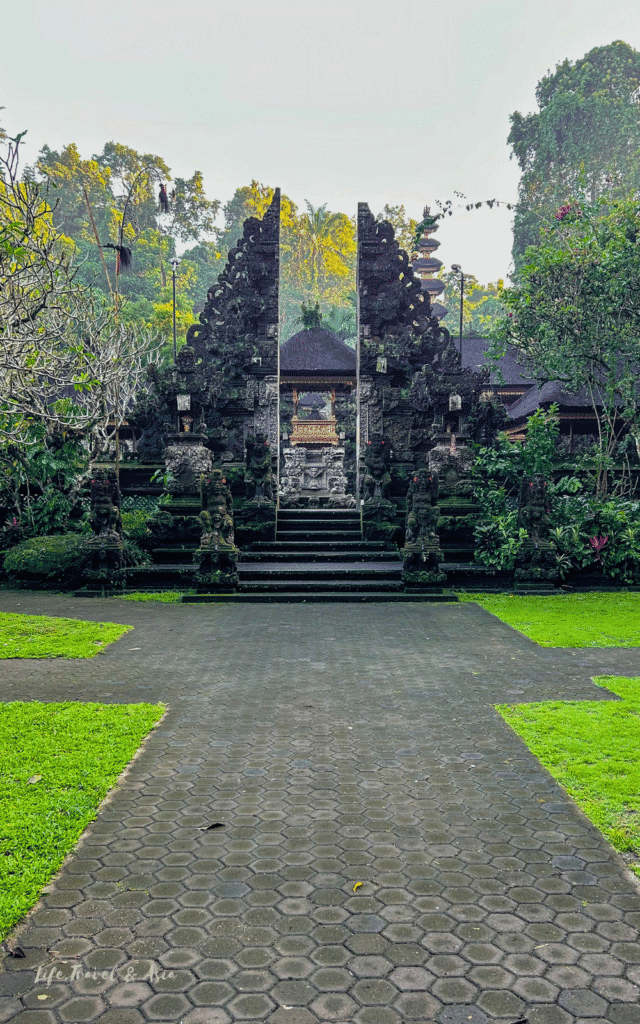
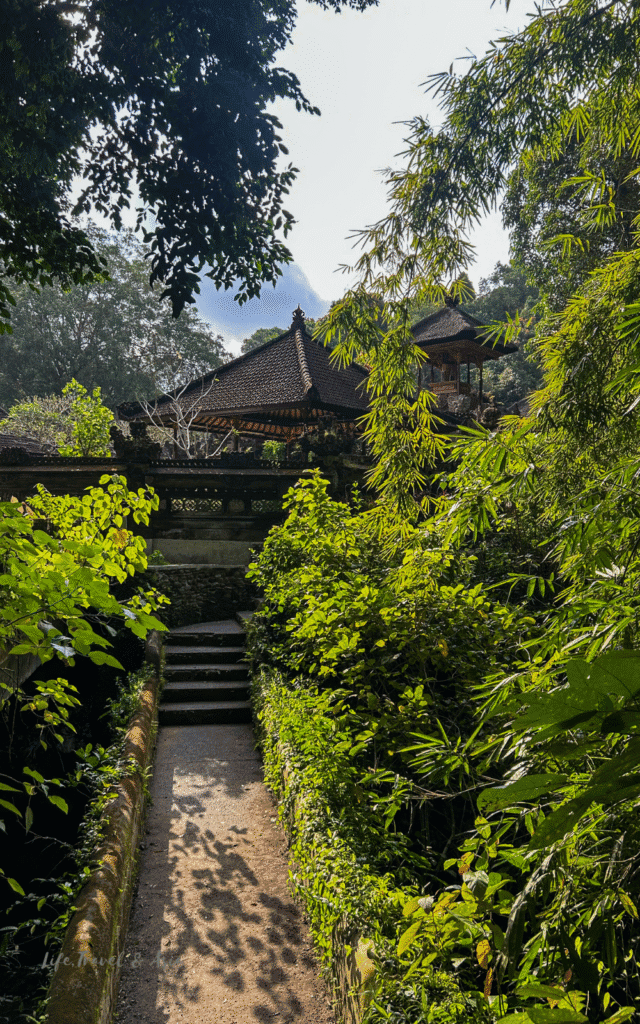
And you understand why immediately upon arriving. The jungle completely embraces the valley, while the rivers rush powerfully beneath the bridge. The sacredness of this place is almost tangible, and the beauty of the temple itself amplifies it.
Pura Gunung Lebah is located right at the start of the Campuhan Ridge Walk. If you peek through the entrance gate, you’ll catch a glimpse of the multi-tiered meru shrines shimmering under the sunlight.
Continuing a little further along the ridge walk, you can even slip behind the temple for a better view from above—in case the glimpse through the gates isn’t quite enough.
6 Temples to Visit Around Ubud
Some of these temples are located just a short scooter ride from Ubud, in the Tampaksiring and Sebatu area. Others, instead, are further away and can be easily combined with nearby sights, making them perfect for a day trip from Ubud.
1. Pura Tirta Empul
Pura Tirta Empul is one of Bali’s most important and sacred water temples, famous for its holy springs.
According to legend, these natural waters were created by the Hindu god Indra and are believed to hold purifying powers.
Many visitors come here specifically to take part in the Melukat ritual—a traditional cleansing ceremony said to wash away negative energy. Even if, for me, Pura Tirta Empul felt way too chaotic for a peaceful and meaningful Melukat.

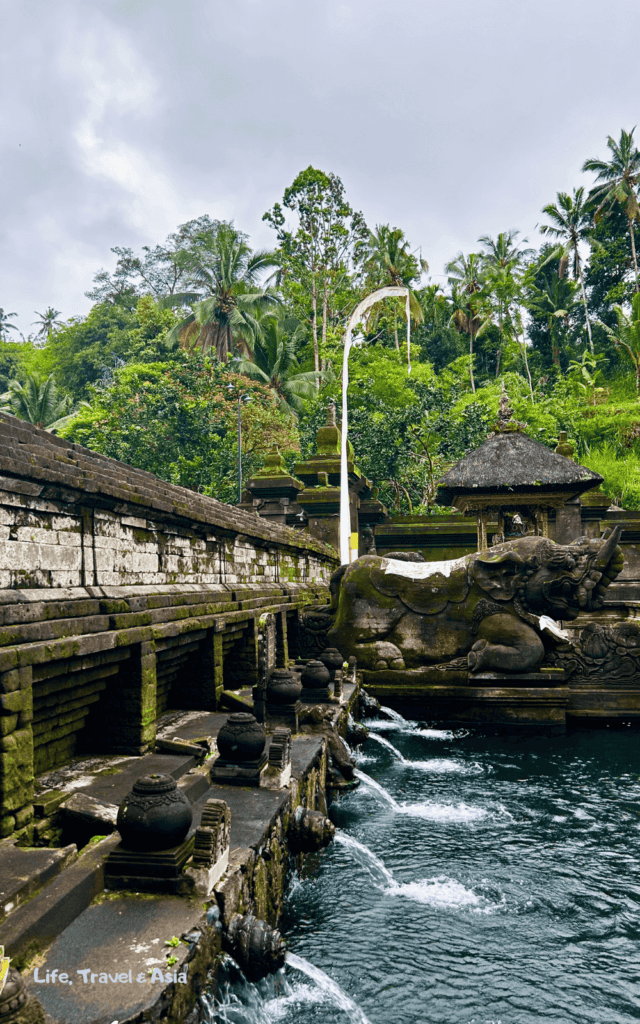
While this ritual draws the most attention, the temple grounds themselves are often underexplored, despite their beauty and cultural significance.
Even if you don’t partake in the ritual, the temple is worth exploring, especially the Jeroan—the inner courtyard just beyond the bathing area. This section, considered the holiest part of the complex, is devoted to prayer.
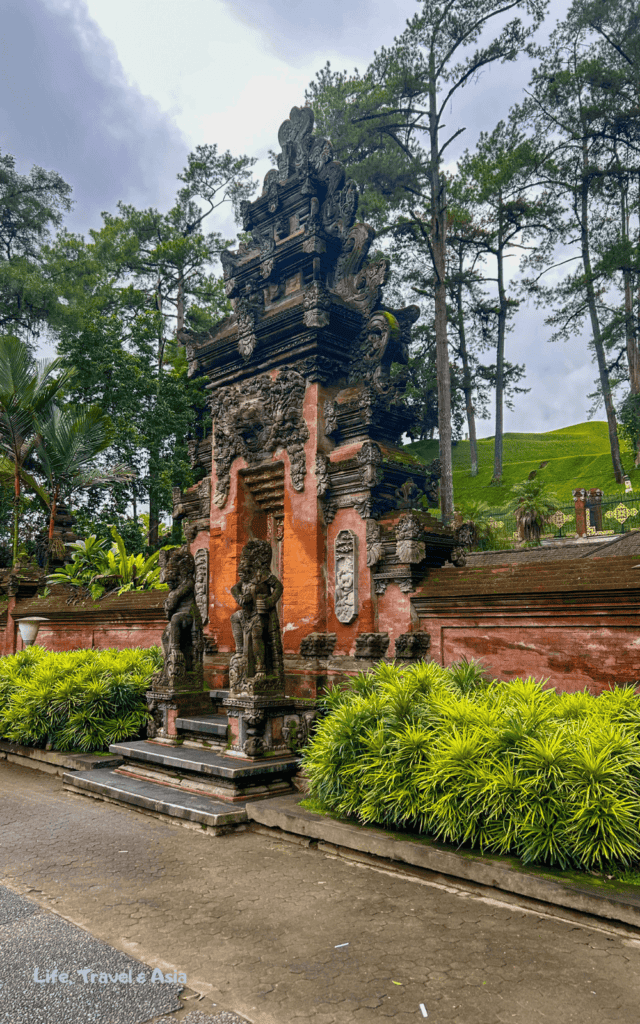
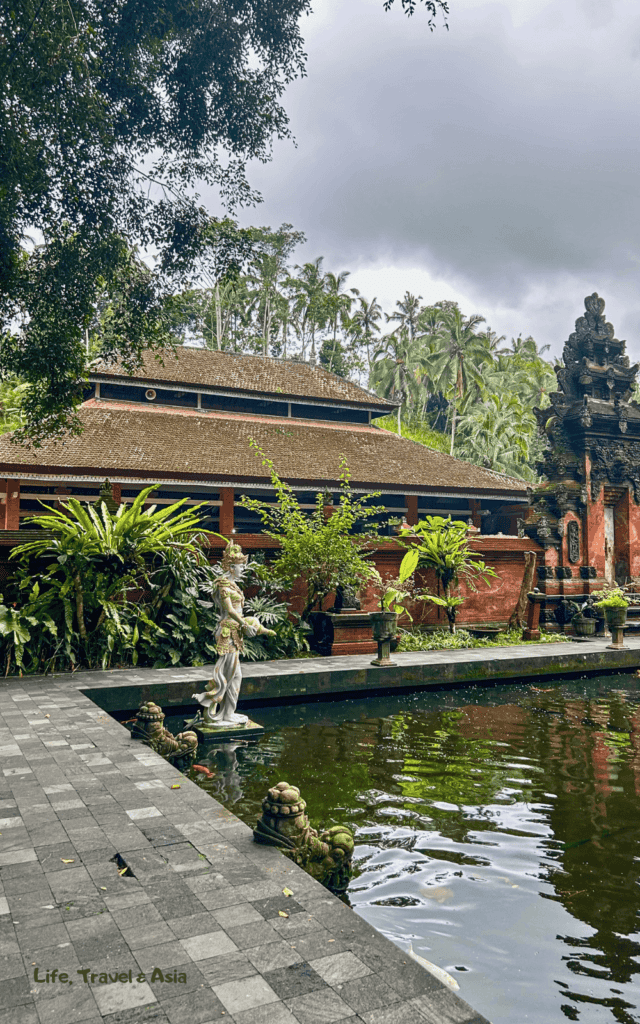
The entrance ticket (without joining the ritual) is IDR 75K and includes a sarong. Whether you’re taking part in the Balinese purification ceremony or simply visiting, going as early as possible is the best way to experience the temple’s spiritual atmosphere. Since this temple is included in most tours, it usually gets crowded from around 9 am.
2. Pura Mengening
Pura Mengening is one of Bali’s lesser-known water temples. Here, you can practice the traditional Melukat purification ritual—but without the crowds you’ll find at more famous temples.
What makes this temple particularly special is its unique architecture. The lower section feels as if it has emerged naturally from the earth, carved into the valley walls.
Here you’ll find koi ponds, freshwater bathing pools, and stone steps that guide you down toward the altar.
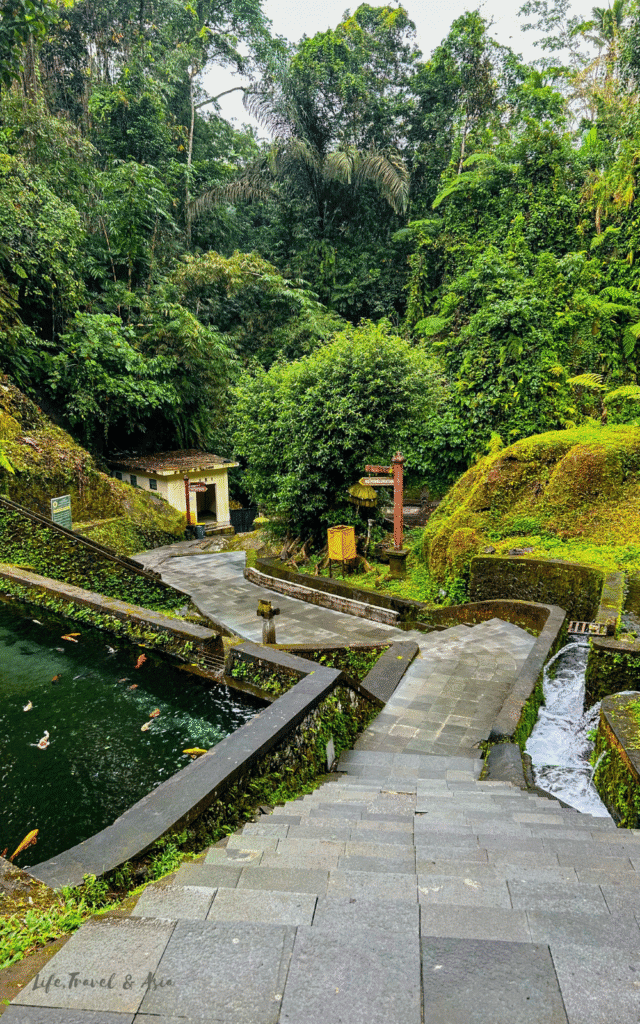

The upper section is the main temple complex, set high on a hill. While the inner sanctum isn’t open to the public, you can climb the staircase to have a look inside and take in the views of the jungle and temple grounds.
Another fascinating detail: the same sacred spring that feeds Tirta Empul also flows through Pura Mengening. Yet the atmosphere here couldn’t be more different—quiet, peaceful, and deeply intimate. When I visited early in the morning, around 8 am, there was no one else, besides me, my guide, and temple keepers.
If you want to experience a genuine Melukat ceremony away from the crowds, Pura Mengening is one of the best temples near Ubud to do so. As said, Pura Mengening is not at all popular, so you can be sure to find a very calm atmosphere at any time of day. The entrance fee is IDR 10K, excluding the ritual practice.
3. Pura Gunung Kawi Sebatu
Gunung Kawi Sebatu is one of those temples in Bali that most travelers have never heard of — and yet, when I asked my local guide for a recommendation, this was the very first place he mentioned. Naturally, I had to visit, and it turned out to be one of the most beautiful and peaceful temples I’ve seen in Bali.
Although it’s not a huge temple complex, the sacred energy of Gunung Kawi Sebatu is undeniable. What makes it truly special is the atmosphere: a mix of silence, spirituality, and untouched natural beauty. When I arrived, the temple was quiet, with just a few Balinese women making offerings and lighting incense at the shrines.
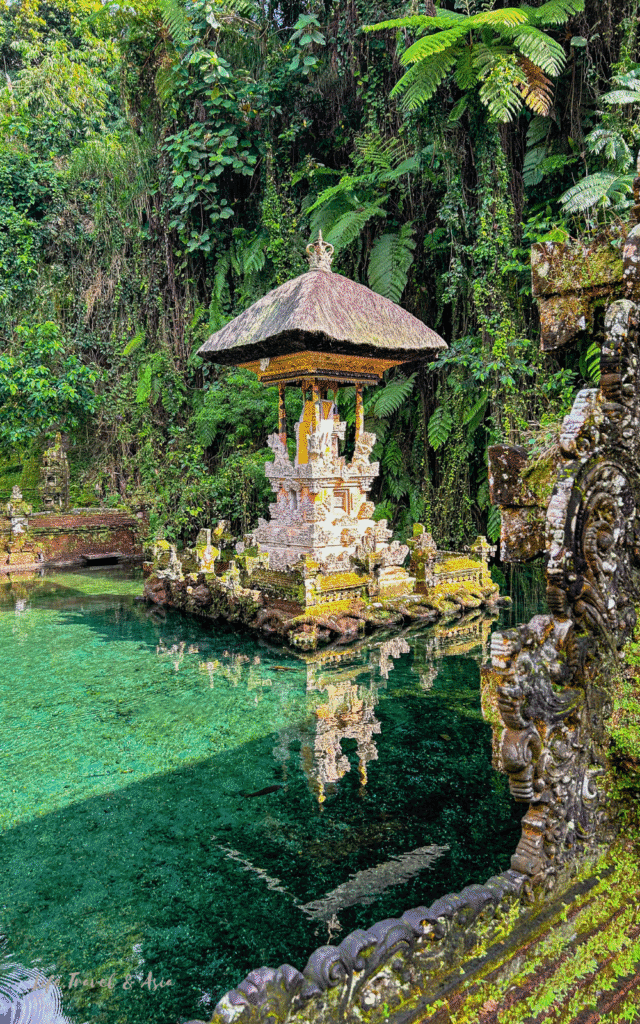
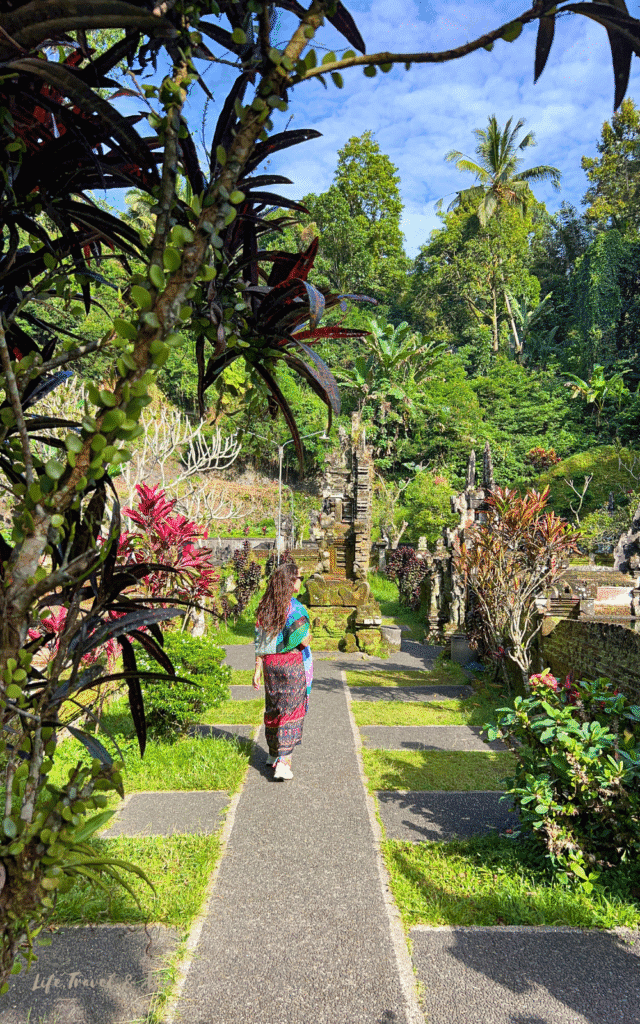
Like most Balinese Hindu temples, Gunung Kawi Sebatu follows the traditional three-courtyard layout. To the left, there’s a lush tropical garden filled with colorful flowers, overlooking crystal-clear spring-fed pools where the Melukat purification ritual often takes place.
I visited this temple around 9 am, and it was empty. I’d say it’s one of those sights you can definitely save for later in the day, since it’s not included in most tours. The entrance ticket is IDR 50K and includes a sarong.
4. Gunung Kawi Tampaksiring
Not far from Gunung Kawi Sebatu — and often confused because of the similar name — you’ll find Gunung Kawi Temple, one of the most fascinating and unique temples near Ubud.
Located in the middle of the jungle in Tampaksiring, this ancient complex offers an entirely different atmosphere. It is often considered one of the most spiritual sights to visit in Ubud’s surroundings.

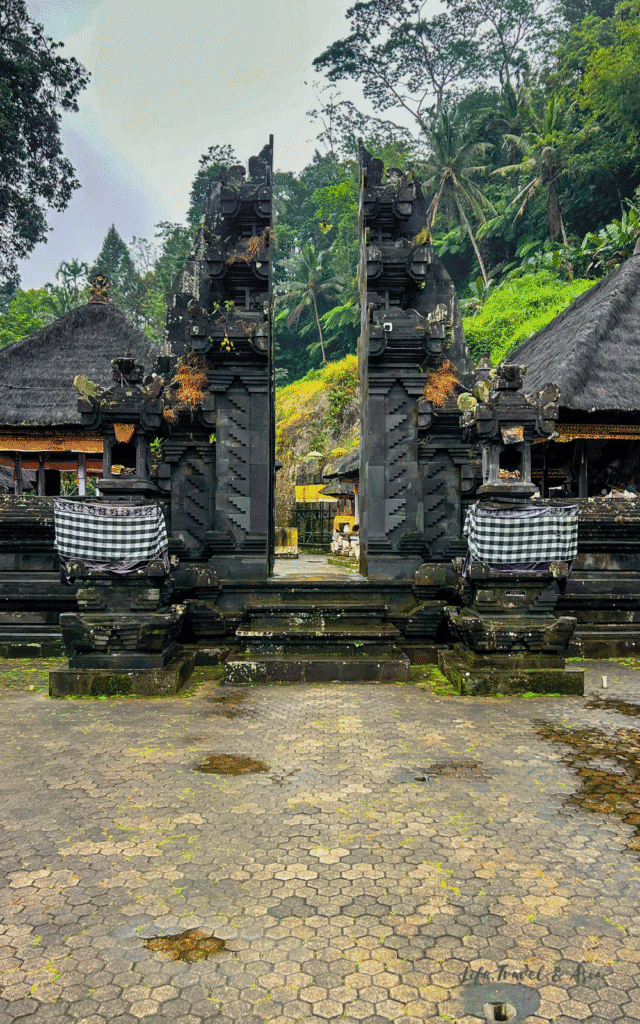
Gunung Kawi is both a temple and a funerary complex, dedicated to Balinese and Javanese royalty. While the temple courtyards and shrines are worth a look, the real highlight is the series of massive shrines carved directly into the cliff walls.
Known as candis, these monumental stone structures are unlike anything else in Bali. There are ten in total: four before the main temple, five just beyond it, and one hidden.
The entrance fee is IDR 75K and includes a sarong. Since this temple is featured in many Ubud tours, it’s best to plan your visit around 8 am to avoid the tour crowds that usually arrive from 9 onwards.
5. Goa Gajah (Elephant Cave)
Goa Gajah, or the Ubud Elephant Cave, is one of the most famous temples near Ubud.
The cave was rediscovered by Dutch archaeologists in 1923, but experts believe it dates back to the 11th century.
The scary demon face carved at the entrance is thought to have been created by Hindu priests, while the nearby Buddhist temple area suggests that Buddhist monks also used the site for meditation.
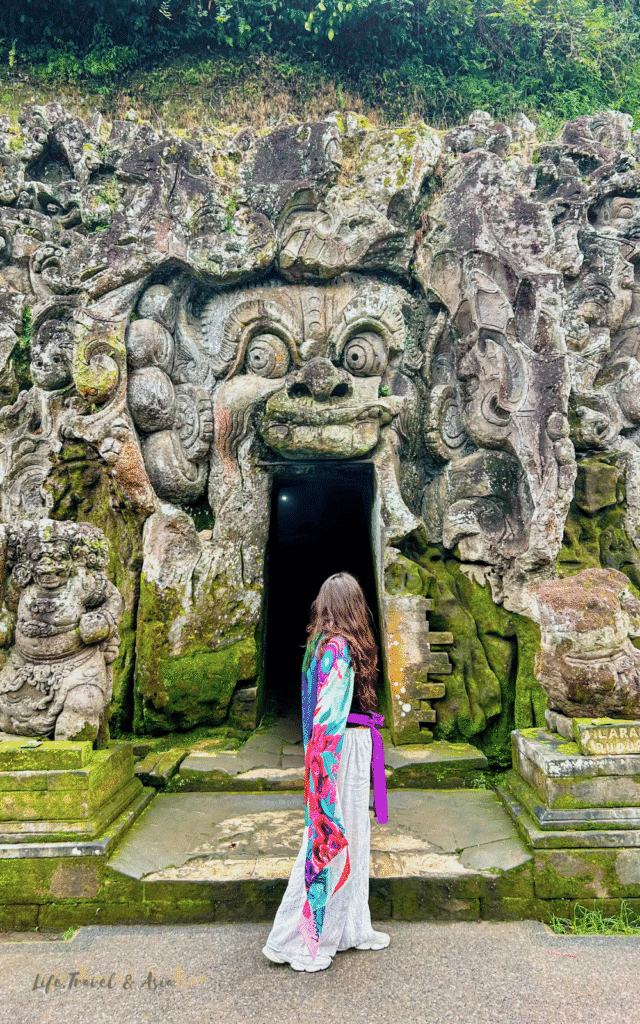
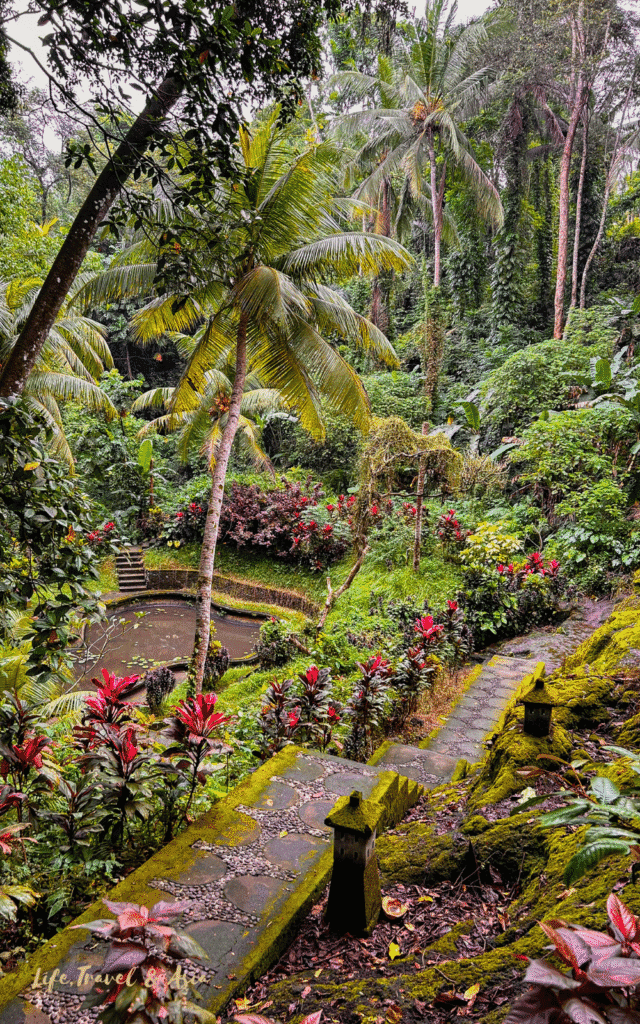
The cave itself is small but fascinating. You’ll step through the mouth of the demon into a narrow passage that opens into two chambers: one with a statue of the Hindu god Ganesha, and another with a symbolic lingam and yoni representing Shiva and the cycle of life.
But the highlights don’t stop at the grotto. Beyond the cave, you’ll find bathing pools, sacred waters, stone staircases leading to tropical gardens, and jungle trails that reveal a hidden canyon by the river and a temple tucked deep in the forest.
If you’re planning a visit, I’ve put together a short Goa Gajah guide with everything you need to know: entrance fee, how to get there, and the best times to visit (hint: before 9 am to avoid the crowds)
6. Pura Ulun Danu Bratan
Pura Ulun Danu Beratan is one of the most iconic temples in Bali. Located on the shores of Lake Bratan in Bedugul, about 1.5–2 hours from Ubud, it’s not the easiest spot to reach on a short scooter ride.
However, it makes the perfect destination for a day trip to Central Bali, especially if you combine it with other nearby sights in Bedugul.
This water temple is dedicated to Dewi Danu, the goddess of water, rivers, and lakes, and plays a vital role in Bali’s traditional irrigation system (subak).


The temple complex is famous for its multi-tiered meru shrines, reflected on the calm waters of Lake Bratan, with the Bedugul mountains creating the most stunning backdrop.
Although Pura Ulun Danu Beratan is one of the most visited tourist attractions in Bali, its beauty is undeniable. To avoid the crowds, consider renting a kayak and enjoying the temple view directly from the lake—it’s an entirely different experience.
Here, the entrance fee is IDR 75K, and for some reason, a Sarong is not required to enter the temple.
Find all the temples to visit in Ubud in the map below so that you can plan your visits.
Best Temple Tours in Ubud (& Around)
Here are a couple of customizable and fixed tours you can plan during your stay in Ubud.
Bali Private Customised Tour: This is the ultimate customizable experience. Whether you already know exactly where you want to go, or you’d like some suggestions, your driver is ready to take you around and help you tick off all the must-see spots on your Bali bucket list—plus a few gems they might recommend along the way. Honestly, it’s one of the most flexible private tour options you’ll find.
Archeology Museum, Gunung Kawi & Goa Gajah Temple Tour: This one’s made for the history nerds. The tour takes you through some of the most fascinating temples in Ubud—Tirta Empul, Gunung Kawi, and Goa Gajah—and even includes a stop at the Archaeology Museum. And if you want to balance all that culture with some downtime, you can always add a relaxing massage at the end.
There you go—these are the best temples to visit in Ubud that I’ve personally explored and recommend. I truly believe that visiting temples (especially if you manage to avoid the crowds) can make your Ubud experience so much more culturally rich and spiritual.
And if you’re planning your own Ubud or Bali itinerary, don’t forget to check out more things to do around Ubud—you’ll find popular sights, hidden gems, and plenty of fun activities to add to your trip.
So, which temple in Ubud would you love to visit first? Drop a comment!
Did you find it helpful? 📌 Save it on Pinterest!







